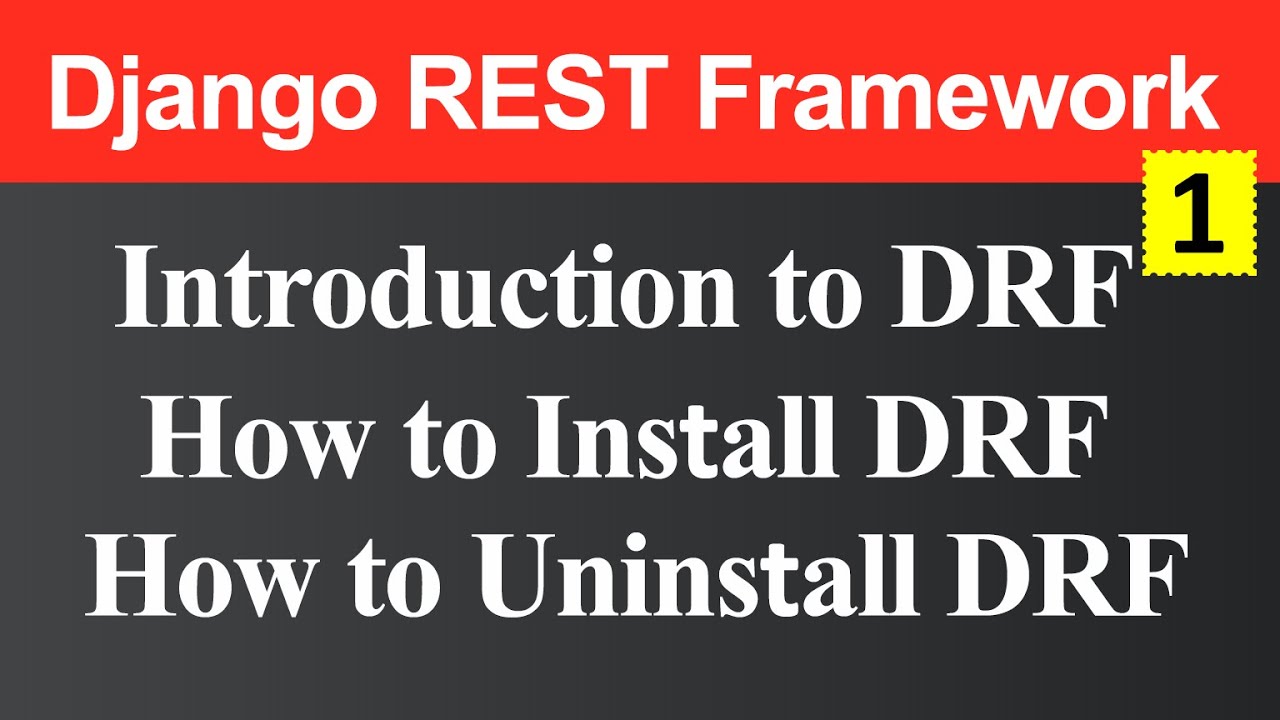Django in 8 Minutes 🔥
Summary
TLDRThis video provides an engaging overview of Django, a popular Python-based web framework. It covers its history, starting from its creation in 2003 by Adrian and Simon, to the establishment of the Django Software Foundation in 2008. The video highlights Django's core features, including its Model-View-Template architecture, built-in admin panel, and powerful ORM for database management. The tutorial also explains essential Django concepts like views, URLs, templates, and migrations, offering a clear and accessible guide for beginners. Django's focus on security, modularity, and the DRY principle makes it a top choice for web development.
Takeaways
- 😀 Django is a free, open-source Python-based web framework created in 2003 by Adrian Holovaty and Simon Willison.
- 😀 The first stable release of Django came out in 2005, and the Django Software Foundation was founded in 2008 to manage the framework's development.
- 😀 Django follows the Model-View-Template (MVT) architecture, which helps separate data, business logic, and presentation layers in web applications.
- 😀 Django's ORM (Object-Relational Mapping) allows developers to easily interact with databases using Python objects without writing SQL queries.
- 😀 The framework emphasizes code reusability, modularity, and maintainability, making it easy to build scalable applications.
- 😀 Django applies the DRY (Don't Repeat Yourself) principle, encouraging developers to write clean, reusable code and avoid repetition.
- 😀 One of Django's standout features is its built-in, customizable admin panel, which simplifies CRUD operations without needing to write frontend code.
- 😀 Django's flexibility allows developers to easily switch between databases (e.g., from MySQL to MongoDB) without major changes to the codebase.
- 😀 Django supports both Function-Based Views (FBVs) and Class-Based Views (CBVs), giving developers flexibility in how they structure their application views.
- 😀 With Django, developers can easily create and manage forms, streamlining the process of submitting and storing data in the database.
- 😀 Django's project structure allows for the use of reusable apps, which can be shared across different projects, adding to its modularity and scalability.
Q & A
What is Django, and when was it first created?
-Django is a free and open-source Python-based web framework. It was created in the fall of 2003 by Adrian and Simon, developers at Lawrence World Newspaper.
Why was the Django Software Foundation (DSF) created?
-The Django Software Foundation was established in 2008 to help manage the Django community and relieve the burden from the developers who were maintaining Django alone.
How did Django get its name?
-Django was named after a Romanian guitarist, Django Reinhardt, who was admired by Adrian, one of the initial developers of Django. The name was chosen in 2003 as a tribute to the guitarist.
What is the Model-View-Template (MVT) architecture in Django?
-The Model-View-Template (MVT) architecture in Django consists of three components: Models (represent the data layer), Views (handle logic and rendering), and Templates (HTML files that define the structure and presentation).
What is Django's ORM, and how does it simplify database management?
-Django's ORM (Object-Relational Mapping) allows developers to interact with databases using Python objects instead of writing raw SQL queries. This makes database management simpler and allows for easy switching between databases.
What is the DRY principle, and how does Django implement it?
-The DRY principle stands for 'Don't Repeat Yourself,' and it encourages writing reusable and minimal code. Django implements this principle by encouraging developers to avoid redundant code and create reusable components.
What is the built-in admin panel in Django?
-Django comes with a built-in admin panel that allows you to perform CRUD (Create, Read, Update, Delete) operations on your application's data. The admin interface is customizable and does not require HTML, CSS, or JavaScript knowledge.
What are Django apps, and how do they contribute to reusability?
-Django apps are modular components that can be created and reused across different projects. Each app is self-contained and can be plugged into other Django projects, promoting reusability and modular development.
What is the purpose of the settings.py file in Django?
-The settings.py file in Django contains configuration variables for the project. It allows developers to configure the database, static files, templates, installed apps, and other project settings.
How does Django handle database migrations?
-Django uses migrations to handle changes to the database schema. Developers create migrations with the 'makemigrations' command, and apply them to the database using the 'migrate' command, which updates the database structure.
Outlines

Esta sección está disponible solo para usuarios con suscripción. Por favor, mejora tu plan para acceder a esta parte.
Mejorar ahoraMindmap

Esta sección está disponible solo para usuarios con suscripción. Por favor, mejora tu plan para acceder a esta parte.
Mejorar ahoraKeywords

Esta sección está disponible solo para usuarios con suscripción. Por favor, mejora tu plan para acceder a esta parte.
Mejorar ahoraHighlights

Esta sección está disponible solo para usuarios con suscripción. Por favor, mejora tu plan para acceder a esta parte.
Mejorar ahoraTranscripts

Esta sección está disponible solo para usuarios con suscripción. Por favor, mejora tu plan para acceder a esta parte.
Mejorar ahoraVer Más Videos Relacionados

Laravel vs Django - What to choose and why?

Django expliqué en 3 minutes (Python Web)

Django Rest Framework and How to Install Uninstall Django Rest Framework (Hindi)

¿Qué es Django y porque importa? - Django y Django REST Framework

How to make a website with Python and Django - BASICS (E01)

Django 4.2 LTS - Alasan saya memilih Django Web Framework!
5.0 / 5 (0 votes)
